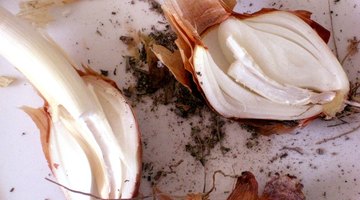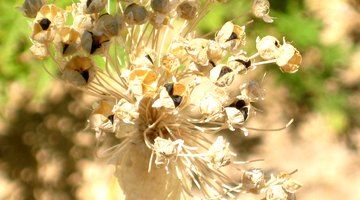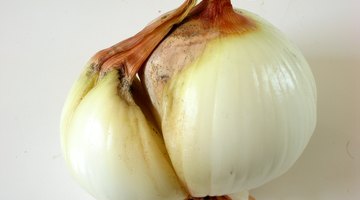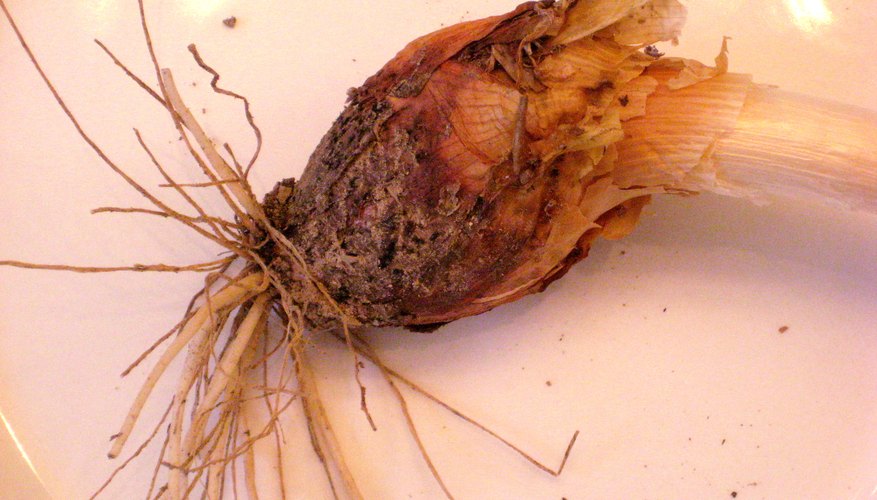Bulbs are interesting plants in that they can reproduce in more than one way. A bulb is a round or oblong fleshy root like structure that grows under the soil, but it is not actually the root of the plant. Rather, the bulb is the lower portion of the plant stem that has thick fleshy modified leaves. The bulb's function is to store food for the plant. The bulb leaves and the roots are attached at a region called the basal plate. If you cut a bulb in half, you will see the layers of fleshy leaves. Commonly seen examples of true bulbs are members of the onion family, daffodils and amaryllis.

Bulbs are interesting plants in that they can reproduce in more than one way. A bulb is a round or oblong fleshy root like structure that grows under the soil, but it is not actually the root of the plant. Rather, the bulb is the lower portion of the plant stem that has thick fleshy modified leaves. The bulb's function is to store food for the plant. The bulb leaves and the roots are attached at a region called the basal plate. If you cut a bulb in half, you will see the layers of fleshy leaves. Commonly seen examples of true bulbs are members of the onion family, daffodils and amaryllis.
Some plants that are called bulbs are not true bulbs. Gladiolus, crocus, lily of the valley and tuberous begonia and iris, for instance, are all plants that grow from underground root structures that are sometimes called bulbs in gardening terminology. However, they differ from true bulbs in their structures and methods of reproduction.
Bulbs Reproduce Sexually

Bulbs are seed plants that produce flowers. Like other seed plants, the flowers must be pollinated in order to form seeds. Pollen containing the male gametes from the flower of one plant is deposited on the stamen, which contains the female gamete(the ovule), of the flower of another plant of the same species.
- Bulbs are seed plants that produce flowers.
- Like other seed plants, the flowers must be pollinated in order to form seeds.
The plants that grow from the seeds are the genetic offspring of both the plant that produced the ovule, and eventually produces the seeds, and the plant that contributed the pollen. The offspring plants will inherit 50 per cent of their traits from one parent plant, and 50 per cent from the other. Genetic variation is achieved among the offspring plants, thus ensuring that at least some will survive despite variable growth conditions. This makes sexual reproduction is the most advantageous way for a bulb plant to guarantee the survival of its species.
Bulbs Reproduce Asexually

Bulbs also can reproduce without the benefit of pollination, through a process called vegetative reproduction, a type of clonal reproduction. The bulb splits and forms new bulbs called bulblets. Another way that bulbs reproduce vegetatively is by forming bulbils---very tiny bulbs---on their stems or flower stalks. In both cases the new plants are genetically identical to the original plant. Vegetative reproduction is thought to be a method available for the plant to survive when climatic conditions are harsh and another plant of its species is not available for pollination.
- Bulbs also can reproduce without the benefit of pollination, through a process called vegetative reproduction, a type of clonal reproduction.
- Vegetative reproduction is thought to be a method available for the plant to survive when climatic conditions are harsh and another plant of its species is not available for pollination.
